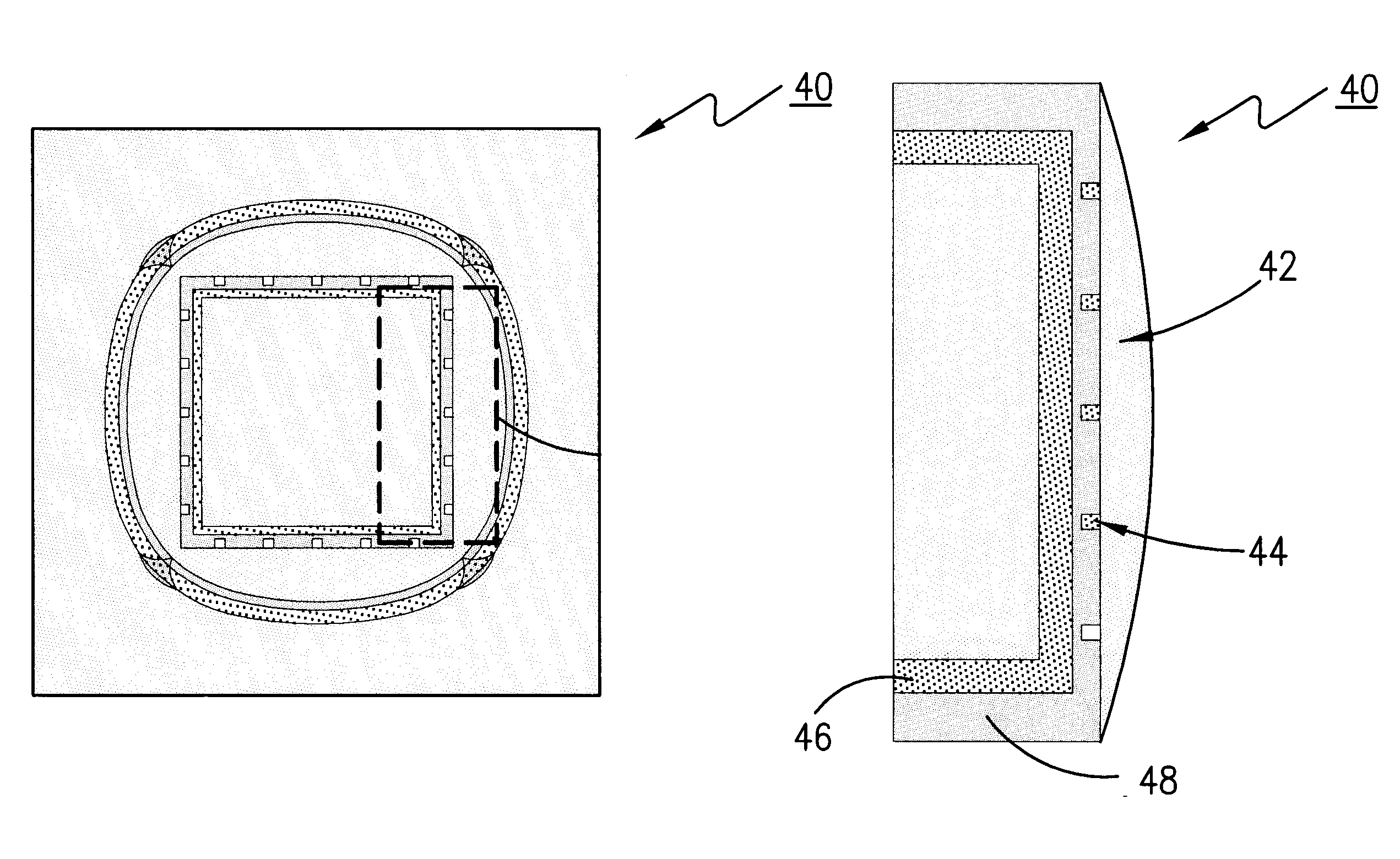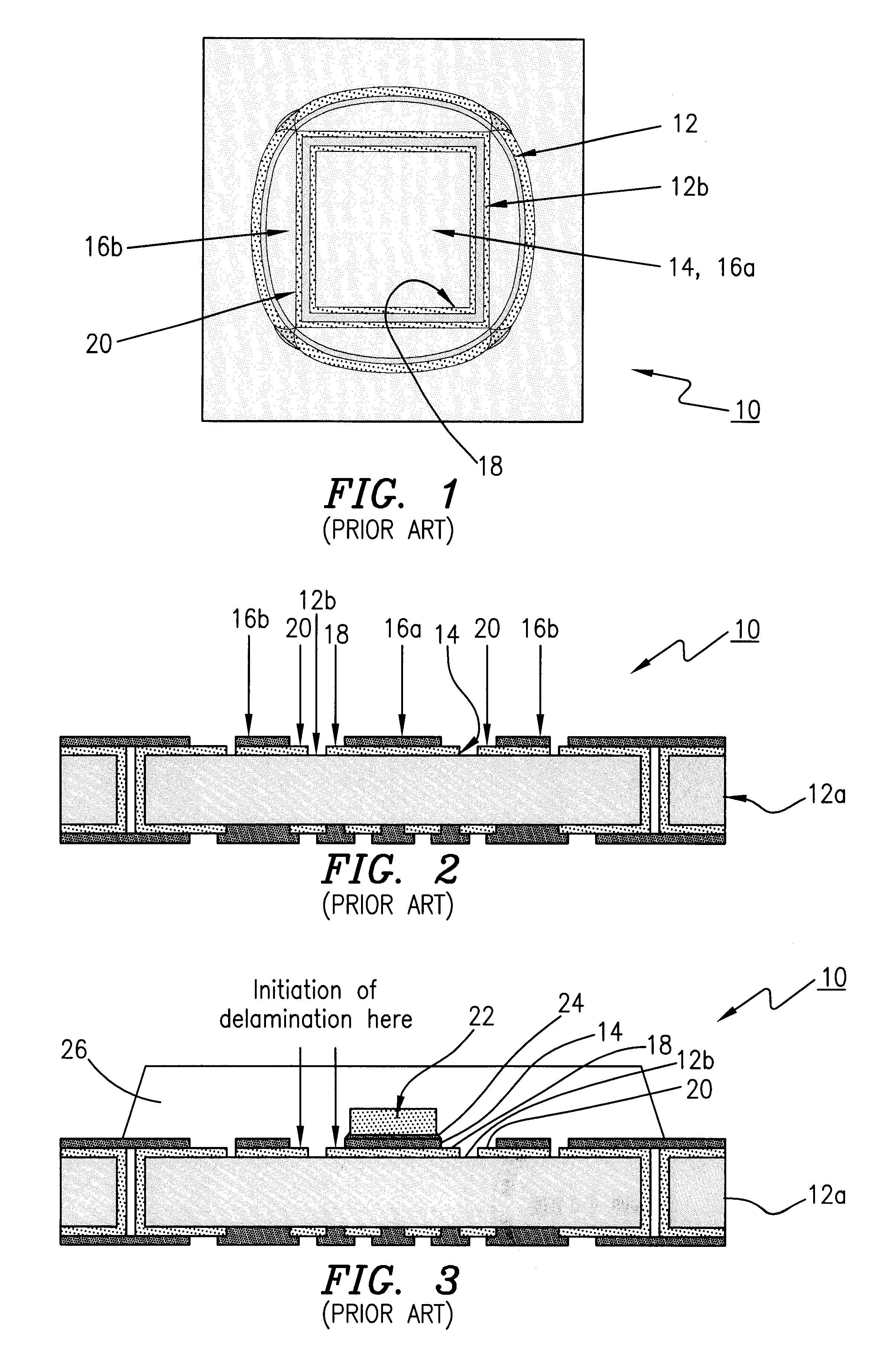Plastic ball grid array package for passing JEDEC Level 1 Moisture Sensitivity Test
a technology of pbga package and wafer, which is applied in the direction of electrical equipment, semiconductor devices, semiconductor/solid-state device details, etc., can solve the problems of pbga package failure, very common failure, and level 1 moisture sensitivity test remains extremely challenging
- Summary
- Abstract
- Description
- Claims
- Application Information
AI Technical Summary
Problems solved by technology
Method used
Image
Examples
Embodiment Construction
The present invention will now be described more fully hereinafter with reference to the accompanying drawings, in which preferred embodiments of the invention are shown. This invention may, however, be embodied in many different forms and should not be construed as limited to the embodiments set forth herein; rather, these embodiments are provided so that this disclosure will be thorough and complete, and will fully convey the scope of the invention to those skilled in the art.
Referring first to FIGS. 1, 2 and 3, wherein conventional or prior art PBGA packages 10 are depicted. A conventional PBGA package has a laminate core / substrate 12. Substantially in the center of the PBGA package 10 is a die pad 14 that is covered with a solder mask 16a. The die pad may be made of copper or another conductive metal. The solder mask 16a covers the die pad 14 so that a continuous square grounding portion (ground ring) 18 is exposed about the die pad 14. The ground ring 18 may be gold plated. The...
PUM
 Login to View More
Login to View More Abstract
Description
Claims
Application Information
 Login to View More
Login to View More - R&D
- Intellectual Property
- Life Sciences
- Materials
- Tech Scout
- Unparalleled Data Quality
- Higher Quality Content
- 60% Fewer Hallucinations
Browse by: Latest US Patents, China's latest patents, Technical Efficacy Thesaurus, Application Domain, Technology Topic, Popular Technical Reports.
© 2025 PatSnap. All rights reserved.Legal|Privacy policy|Modern Slavery Act Transparency Statement|Sitemap|About US| Contact US: help@patsnap.com



